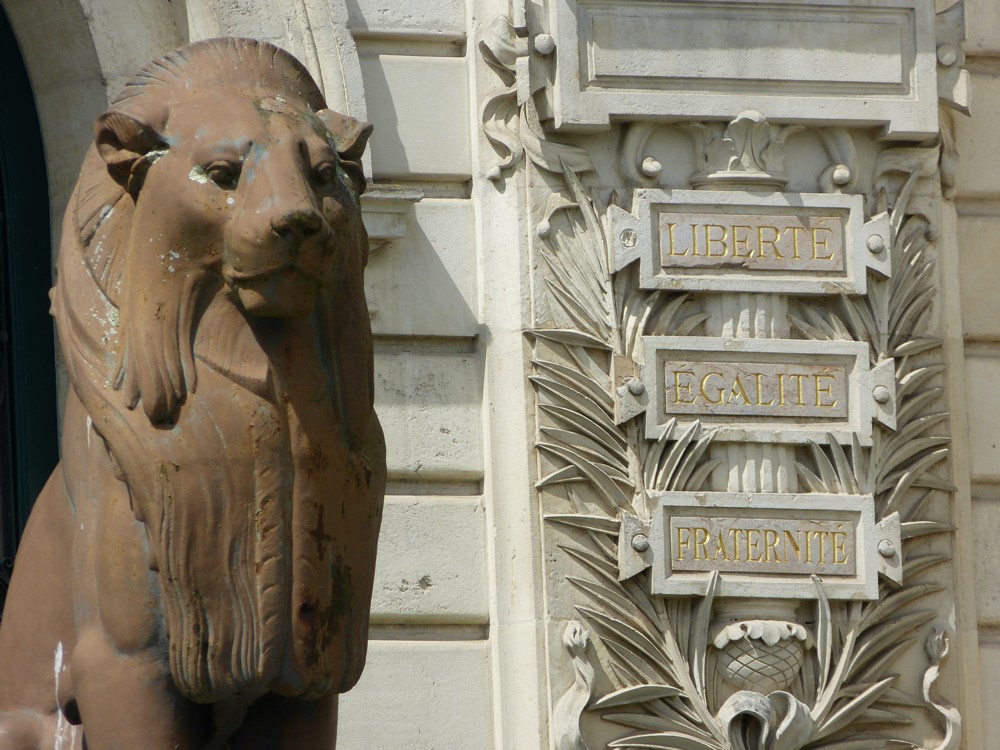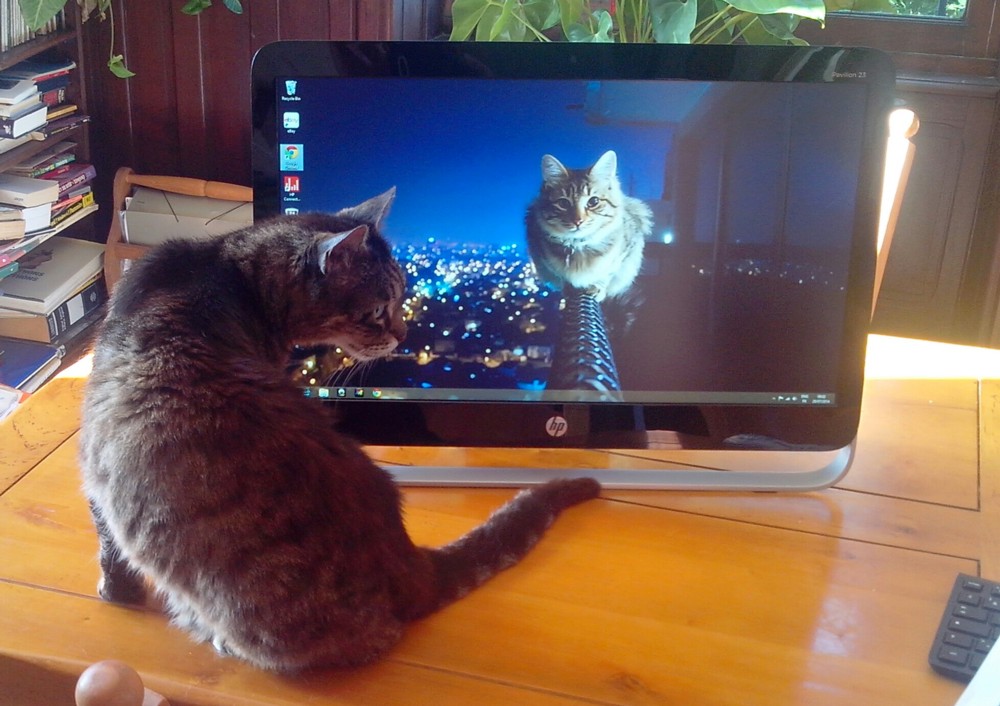I loved them when I photoed them last January. Now the chimney pots and rooftops of Paris get serious Real Photographer attention, from Michael Wolf:
One of David Thompson’s latest clutch of ephemera.

I loved them when I photoed them last January. Now the chimney pots and rooftops of Paris get serious Real Photographer attention, from Michael Wolf:
One of David Thompson’s latest clutch of ephemera.
Yes, I’ve been in France, and now I’m back. Have been for several days actually, but I spent my recent blogging time doing this, which is a photo-decorated ramble on various things I saw in France, or thought I did, for Samizdata.
I really want to get back into the swim of things over there, after a recent dry spell, and was accordingly determined to finish that ramble before I resumed rambling here.
Since this is Friday, here are some French cats.
Cat number one stands outside Vannes town hall:

Cat number two is impressively perched on an impressively high ledge, somewhere or other. Cat number three, the cat of the friends I was staying with, is shown here, not being very impressed with cat number two:

This photo was taken by Tony, to whom thanks, and to whom thanks also for emailing it to me.
Here, on the other hand are two further photos that I did take of cat number three:
No, I don’t know why his right ear is green on the inside. I only noticed this when I got home.
His name is Caesar (sp?), and he actually does answer to that name. It’s not tone of voice, it’s the name, because when I said this to him for the first time, he immediately looked up to see what I had in mind.
There is another cat, Basil, who drops by at the home of Tony et famille from time to time, but he is more shy. He was otherwise engaged, on my last day there which was when I finally decided I wanted to photo the two cats. Caesar showed up, but not Basil. Another time, maybe.
Caesar is now very old, and I may never meet with him again. We got on well.
I’ll let this guy explain it:
The areas around Rotherhithe and Surrey Quays was once a series of docks that were slowly filled in and lost in the 1970s and early 1980s.
As befits an area that was originally a marsh, and then an industrial hub, it was entirely flat, so it may surprise people to learn that there is a decent sized hill lurking right in the middle of these former docks.
Stave Hill is however a very modern edifice, being made up largely from rubble left over from the clearance of the docks and then shaped into a sharply defined flat-topped cone. It is also only just about as high as most of the houses that surround it, so while you get a view from the top that is almost entirely free of blockages, the hill itself is hidden from people looking the other way.
The reason I’ve no time to describe it is I’ve just got back from taking photos from the top of it myself. I took a million zoom shots of individual Big Things, on their own and in clumps, but here is a panoramic shot that gives you a sense of what the place is like:
I forced myself to pick just the one shot from the twenty seven million I took. Well, 463 to be more exact. Often, after one of these photo-expeditions, I pick out about twenty of the best shots, and and then never get around to showing them here at all, because it becomes too complicated, and there is too much to be said about them all. This time I’ve kept it simple, and stolen stuff from elsewhere, and that way, I got it done.
I will say this, though. The sheer number of Big Things you can see from this spot is truly amazing. Some of my favourites are Big Things that you can just see the very top of, like Big Ben and the tower of Westminster Cathedral. And I think I also spotted the tops of two of the chimneys of Battersea Power Station, but that needs to be checked. Definites include; the Gherkin, the Shard, the Cheesegrater, the Walkie Talkie, the Strata, the Spraycan, the Wheel, Tower Bridge, the Dome of St Paul’s Cathedral, the Monument, and, away on the other side, the Docklands Towers. The tricky bit is getting as many Big Things as possible into the one shot, which is quite hard. For instance, you can’t see the Gherkin in the picture above. Those trees do not help. For this reason, it might be fun to go back in the winter, when the damn leaves have gone away.
I get google emails whenever “3D printing” is mentioned at all prominently on the www, and the latest one definitely got my attention. It linked to a story about a guy who has been 3D printing in his garden.
A building contractor living in Minnesota has developed his own 3D printer which can print concrete directly from CAD design software, and he has used it to 3D-print a castle in his back garden.
Here is how that looks:
Calling that a “castle”, as this story does, is a bit of a stretch. At the moment, if this is anything to go by, open-air and architectural 3D printing seems to have all the deft elegance and aesthetic flexibility of a dot matrix printer. But the equivalents of laser printers, and then (what we have now) cheap laser printers, and cheap colour printers, will surely soon be with us. And in due course the building trade will become something completely different, and hence buildings will too.
Yet another reason why I would love to remain alive for another century, just to see how this kind of stuff develops.
In England, this guy would either have failed to get planning permission for this erection, or else he would now be being told to take it down, for having failed to get planning permission.